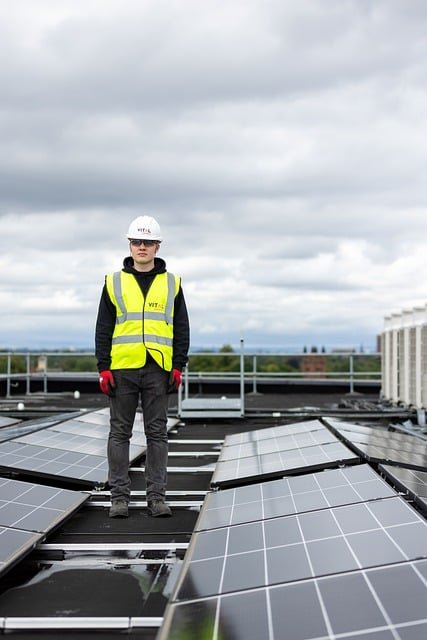Energy-Saving Strategies for Compressed-Air Systems in Global Workplaces
Compressed-air systems are major energy consumers in many industries. This article outlines practical strategies to reduce waste, optimize equipment, and align maintenance and workplace culture to cut energy use across sectors such as pharmaceutical production, modular construction, and automated manufacturing.

Compressed-air systems are widespread across factories, laboratories, construction sites and service shops, and they often run well beyond actual demand. Small design choices—right-sized equipment, leak management, and smarter controls—can significantly lower energy use while maintaining productivity. This article examines practical, verifiable strategies that apply in diverse settings from pharmaceutical plants to modular construction yards and small hardware stores.
How can equipment upgrades reduce energy use?
Upgrading compressors and related equipment is one of the most direct ways to save energy. Replacing old rotary-vane or piston units with modern, variable-speed-drive (VSD) rotary-screw compressors often reduces electricity consumption during partial-load periods. Properly sized receivers, efficient dryers and targeted filtration reduce pressure drop and cut unnecessary run-time. In contexts such as modular construction or metal panels fabrication, matching compressor capacity to peak and average demand avoids oversizing; in smaller workshops or a store that services tools, choosing compact, efficient units helps limit both footprint and energy draw.
What role does safety and safety gear play?
Safety considerations intersect with energy efficiency because unsafe systems are often wasteful systems. Compressed-air leaks, inadequate shielding around piping, or poorly secured hardware can cause pressure loss and frequent cycling. Routine inspections that include checking fittings, safety valves and condensate drains reduce both hazard and energy waste. Training staff on safe operation and ensuring appropriate safety gear minimizes rushed or improper adjustments that might increase pressure settings. In automated environments where robots or pneumatic actuators are used, integrating safety checks into maintenance schedules ensures reliability without excessive energy penalty.
How to include sustainable practices and biofuels in planning?
Sustainability measures for compressed-air systems focus primarily on electricity use but can extend to broader energy sourcing and site design. Facilities aiming for greener operations—whether a factory in Sweden or a distribution hub—can prioritize efficient compressors, heat recovery from compressor oil or aftercoolers, and integration with low-carbon electricity or on-site generation. While biofuels and biology-related energy solutions are more relevant to thermal processes than directly to compressed air, heat recovered from compressors can be redirected to processes that might otherwise use fossil fuels. Sustainable design also touches construction choices—paving stones or metal panels used in outdoors equipment shelters influence thermal loads and equipment longevity.
How do automation and robots affect system efficiency?
Automation and robots change demand patterns for compressed air: high-frequency pneumatic actuators create many short bursts of demand, while centralized pneumatic tool systems can produce steady loads. Smart sequencing, local reservoirs near robot cells, and electronic proportional valves reduce the need for high system pressure and minimize throttling losses. Integrating compressed-air controls with a plant’s smartphone-accessible monitoring or building management system enables predictive maintenance and demand forecasting. In pharmaceutical or precision manufacturing, where clean, dry compressed air is critical, avoiding leaks and maintaining dew-point control reduces wasteful purging cycles while protecting product quality.
How do workplace culture and maintenance practices influence savings?
Workplace culture shapes how consistently energy-saving practices are followed. Regular leak detection programs, clear maintenance logs, and a culture that rewards energy-conscious behavior tend to produce measurable savings. Training operators about simple actions—closing isolation valves, reporting abnormal noise from compressors, and avoiding unnecessary use of compressed air for cleaning—reduces waste. Practical site details matter: a driveway that funnels water into an outdoor compressor shelter, or windows and ventilation that affect temperature, can change compressor duty cycles. Local services and contractors that understand these interactions can help optimize systems in your area.
| Product/Service | Provider | Cost Estimation |
|---|---|---|
| VSD rotary-screw compressor (small industrial) | Atlas Copco (GA series) | €5,000–€20,000 (varies by power and configuration) |
| Fixed-speed rotary-screw compressor (industrial) | Ingersoll Rand | €4,000–€18,000 |
| Skid-mounted compressor package with dryer | Kaeser | €8,000–€40,000 |
| Large stationary compressor (for heavy-duty plants) | Sullair / Quincy | €15,000–€60,000 |
Prices, rates, or cost estimates mentioned in this article are based on the latest available information but may change over time. Independent research is advised before making financial decisions.
Conclusion
Reducing energy use in compressed-air systems combines technical upgrades, disciplined maintenance, and cultural practices that prevent waste. Decisions should be based on measured demand profiles, careful price comparison, and realistic cost estimates for upgrades and ongoing energy. Whether in a pharmaceutical plant, a modular construction site, a hardware store, or an automated factory with robots, focusing on right-sizing, leak management, smart controls and heat recovery yields reliable energy savings without compromising safety or productivity.





